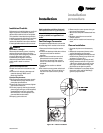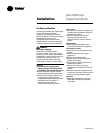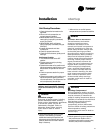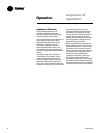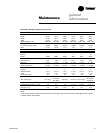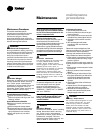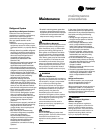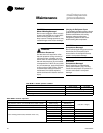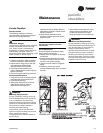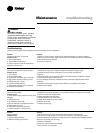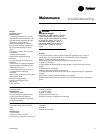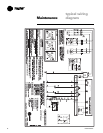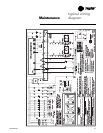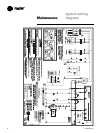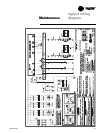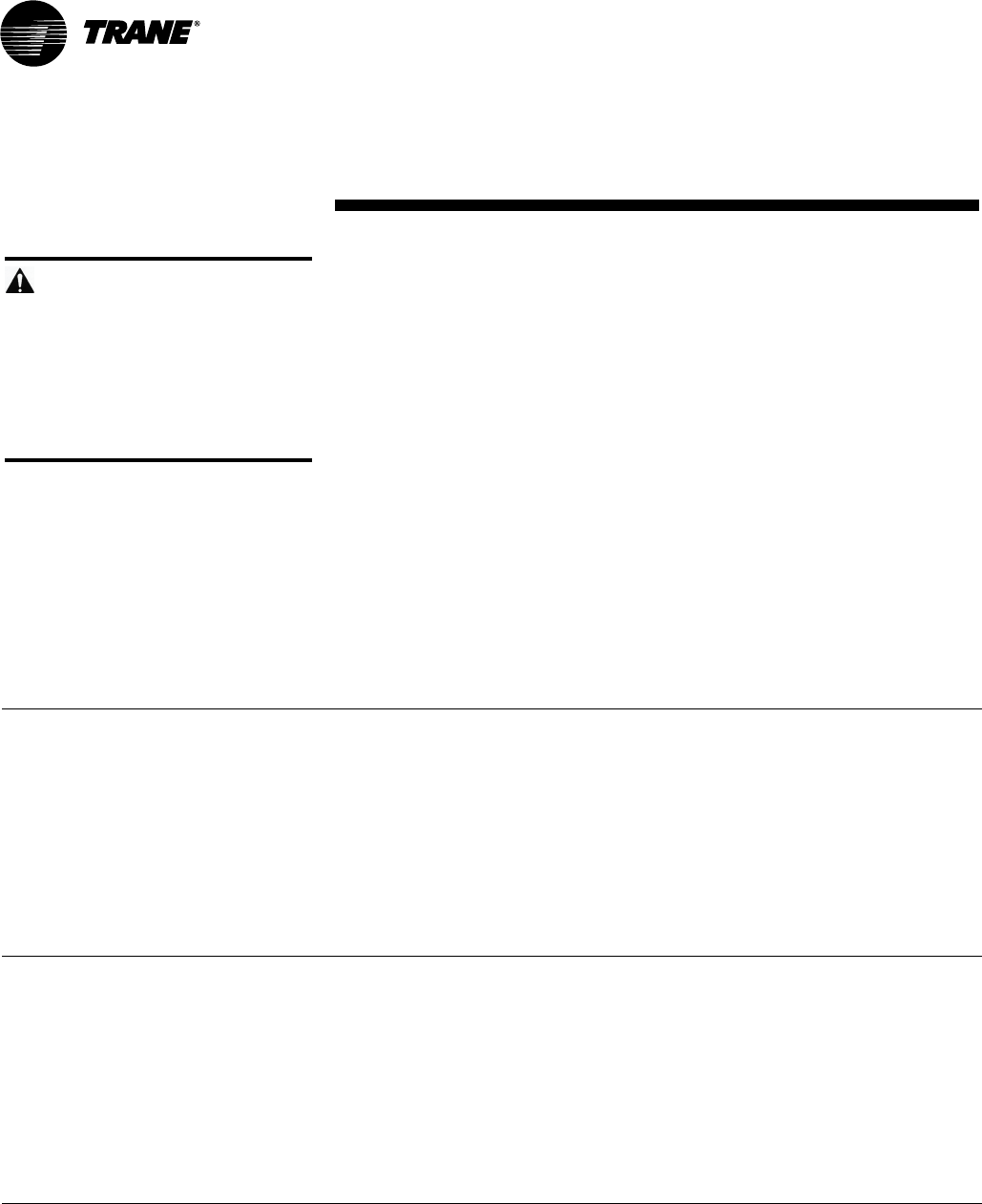
30 PKG-SVX14A-EN
Maintenance
troubleshooting
Troubleshooting
Use the following steps and procedures to help correct these common problems.
Problem
The entire unit does not operate.
Possible cause
1. Power interruption
2. Thermostat not operating
3. Electrical panel: a) 24-volt transformer
defective; b) loose wire
Problem
Fan runs but compressor does not start.
Possible cause
1. Low voltage
2. Remote thermostat
3. Compressor contactor open or burned
4 .High pressure control cutting out unit
5. Refrigerant leak - no gas
6. Loose or defective wires.
7. Compressor shorted, open or burned
8. Defective compressor
Problem
Unit held off by safety.
Possible cause
1. Unit cutout on high pressure control, set at
385 psig
2. Refrigerant leak
3. Air restriction, dirty coils
4. Partial restriction in refrigerant system
5. High pressure control
6. TXV power element charge loss
7. Loose connection in electrical unit
Problem
Noisy operation.
Possible cause
1. Copper tubing vibrating
2. Machine vibrating out of level
Remedy
1. Check for blown fuses or tripped circuit breakers. Replace or reset if necessary.
2. Setting may be too high; check unit and reset. Thermostat may be out of calibration
or otherwise defective; replace.
3. Correct as required.
Remedy
1. Check power supply for voltage outside the acceptable voltage range.
2. Check the control unit for loose wires. Firm any loose connections.
3. Replace.
4. Check for loose wire connection, broken or burned contacts. If defective, replace.
5. Locate leak and repair. Recharge unit.
6. Tug on wires to see if they will separate from connections. Replace terminals if
necessary.
7. Check for shorts, opens, and grounded. Remove and replace compressor.
8. Remove and replace.
Remedy
1. Adjust tubes by bending slightly to firm position without touching other unit parts.
2. Level unit base. Fully support base.
3. Check and tighten loose screws.
4. Tighten screws on fan wheel shaft.
5. Adjust wheel position on motor shaft
6. Replace fan motor.
7. Replace fan bearing.
Remedy
2. See if unit is low on refrigerant charge. Repair leak and recharge unit.
3. Verify if the air filter is dirty or has an airflow restriction, and correct problem.
4. Locate restriction by inspecting refrigerant lines for temperature changes. Remove
restriction, evacuate, and recharge.
5. Replace, if defective.
6. Evacuate, replace element, recharge.
7. Trace and firm up connection.
WARNING
Hazardous voltage!
Disconnect all electric power, including
remote disconnects before servicing.
Follow proper lockout/tagout procedures
to ensure the power can not be
inadvertently energized. Failure to
disconnect power before servicing
could result in death or serious
injury.



